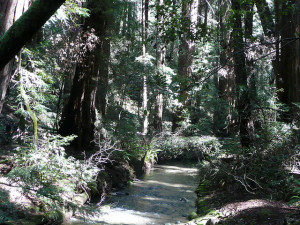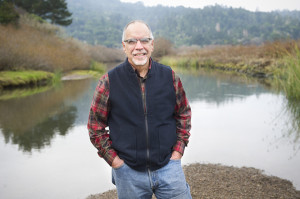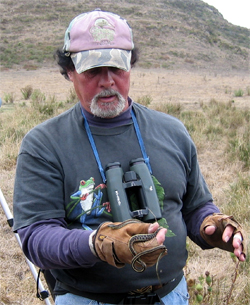Every year, birders of all stripes head out to the doorsteps of our feathered friends to take inventory of their numbers and whereabouts.
The Christmas Bird Count, as it’s called, is not for the faint of heart. It starts at dawn – rain or shine – and proceeds until dusk across some of the roughest of terrain. You don’t have to be an expert to join, but many of the census-takers are world class birders who have been doing the count for years, if not decades, and they are certainly the leaders of the flock.
“It’s almost like a military style operation,” said David Wimpfheimer, a former leader of the Point Reyes bird count.
It’s serious business upholding a century-plus tradition and contributing to a growing body of data on bird populations. The CBC, a project of the National Audubon Society, is the oldest and largest citizen science event in the world. It’s been making use of crowd-sourcing well before there was a Digital Age.
This week begins Year 112 of the nationwide count, and it’s just as lively as ever. Here in the Bay Area, around 200 people alone are expected to hit Point Reyes National Seashore on Saturday to join one of the more popular counts of the region.
The Point Reyes crew has been around since the 1960s and regularly turns up counts of 100,000 individual birds, says one of the two count compilers, John Longstreth. “We do a pretty complete search,” he said.
Doing the search involves sending out some 30 teams of up to 12 people into designated territories within a 15-mile diameter circle. The team leader usually knows the terrain well, having done it many years before gaining such senior status. The teams move at a fairly fast clip to systematically cover the area, quietly looking and listening as they go.
At Point Reyes there’s lots of water. Some teams slide into kayaks to reach their birds, and one guy just sits all morning on the shore with a scope staring out into the Pacific Ocean, said Longstreth. The group used to hire a boat and took to the sea, but ditched that practice when the price of gasoline got too expensive. Others jump on mountain bikes to reach deep into their terrain.
As the story goes, the CBC started in 1900 in response to the annual habit of hunting birds on Christmas Day. Alarmed at declining bird populations, Frank Chapman, an early officer in the budding Audubon Society, proposed counting birds instead of killing them. The idea, like the conservation movement itself, took flight.
Last year’s global count involved 2,215 groups, 62,624 people, and tallied more than 60 million birds in the U.S., Canada, and countries in Latin America, the Caribbean, and the Pacific Islands. The first ever CBC tally was also submitted from Haiti, the birthplace of John James Audubon. The groups compile and send their data back to the National Audubon Society, which keeps track of the records.
The counters aim towards accuracy, but field work like this is a hard slog. Birds don’t tend to stay put, so there are strategies to prevent repeat counting.
“If hawks are in the air, we put down if they’re flying into another territory,” said Longstreth. “And ducks, loons, and cormorants are on Tomales Bay. If they fly one way we count them, if they fly the other way we subtract them because as we move up the bay we figure we’ll catch them.”
Here’s another tip. In a large flock, forget counting individuals. You have to count by the 10s or 100s. It’s yet another reason why having experienced birders out there make a difference.
Longstreth said you also can’t take stock in any year’s numbers. Say it rains all day. The birds are not going to be as visible or mobile.
“What’s of value is what we are seeing over the course of many years, what are the trendlines,” he said.
Apparently the trendlines are showing some interesting things. At Point Reyes there’s been some good news. Bald eagles and peregrine falcons are showing up, a sign that the ill effects of the DDT era might finally be coming to a close. At the national level, Audubon says its seeing species’ ranges move in response to climate change.
Above all, the count is just plain fun, and a chance for normally solitary birders to hobnob with their ilk. And despite what can be an intimidating level of expertise among some of them, Longstreth said they are looking for new blood. After all, they need the next generation to take up the count.
“Birders are pretty friendly. They can be a little odd, I’ll grant you, but they like to teach people,” he said.
Case in point: the youngest to join the Point Reyes group this year is 9 years old. And on the other end of the spectrum are two in their 80s.
Here is a list of counts in California over the next three weeks.

.jpg)



